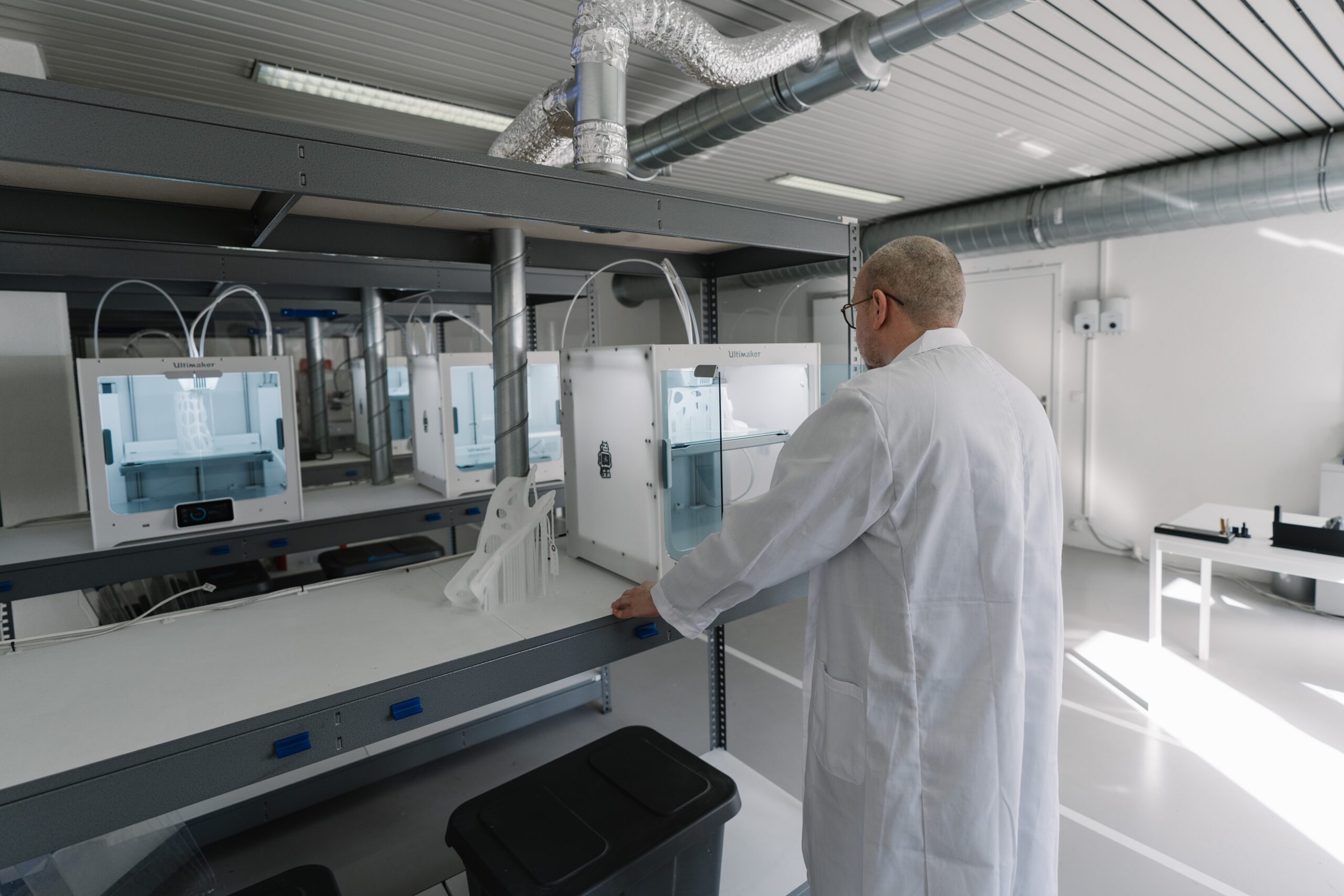The remarkable progress in 3D printing technology has opened up endless possibilities across various industries, including the field of medicine. Additive manufacturing has provided healthcare professionals with more efficient, tailored, and cost-effective solutions to the challenges they face daily. Among the various 3D printing techniques, stereolithography (SLA) stands out as a technology with immense potential in revolutionising medical device development and patient care. In this article, we will explore the multitude of advantages offered by SLA 3D printing and delve into five key applications within the medical industry.
The Advantages of Stereolithography in Medical 3D Printing
Across the United Kingdom and around the globe, the medical sector is embracing 3D printing as an innovative tool to drive advancements. This adoption has been fueled by the desire to enhance patient care and outcomes, optimise surgical procedures, and expedite product development cycles. Stereolithography, one of the oldest and most widely used industrial 3D printing technologies, utilises a high-powered laser to selectively cure photosensitive resin layer-by-layer. It offers numerous benefits that are particularly well-suited to medical 3D printing:
- Accuracy: With an exceptional tolerance range of ± 0.10-0.15mm, SLA ensures high precision in 3D printing, resulting in dimensionally accurate parts—a critical requirement for patient-specific devices.
- Detail: The high resolution of SLA 3D printing enables the production of intricate structures with a smooth surface finish, allowing for an unprecedented level of detail.
- Versatility: SLA 3D printing supports a wide range of materials, including biocompatible and sterilisable resins suitable for diverse medical applications.
- Efficiency: By speeding up prototyping and shortening production cycles, SLA fosters efficiency in product development, accelerating the delivery of innovative medical devices and improving patient care.
- Cost-effectiveness: Similar to other additive manufacturing technologies, SLA eliminates the need for expensive tooling, offering a more affordable solution for prototyping and low-volume production. This reduces the financial burden on healthcare systems, making medical care more accessible.
Applications of SLA 3D Printing in Healthcare
The manifold benefits and cost-effectiveness of SLA 3D printing have led to a multitude of applications within the medical industry. These applications span various fields, reflecting the broad capabilities and potential for innovation that this technology brings. Let’s explore five noteworthy examples:
- Anatomical Models for Surgical Preparation: 3D printing allows for the production of patient-specific anatomical models based on CT scans or MRI data. These models provide surgeons with a tangible and visual representation of a patient’s unique anatomy, aiding in pre-surgical planning and intraoperative guidance. The exceptional accuracy of SLA ensures the creation of precise, detailed replicas, contributing to improved surgical outcomes.
- Patient-Specific Medical Devices: SLA facilitates the creation of customised medical devices, prosthetics, and implants tailored to each patient’s specific needs and anatomy. This customisation enhances their functionality, durability, and comfort. For instance, 3D printed hearing aids can be precisely shaped to fit an individual’s ear canal, ensuring optimal performance and patient satisfaction. SLA’s compatibility with various materials enables the production of a wide array of medical devices, from dental aligners to finger splints.
- Surgical Instruments: SLA 3D printing plays a vital role in manufacturing surgical instruments such as guides, forceps, clamps, and cutting tools. These tailor-made instruments assist surgeons in performing precise and complex procedures. For example, a custom surgical guide can ensure accurate placement of screws during orthopedic surgery. SLA’s high-resolution printing capabilities enable the creation of detailed and intricate surgical instruments, minimising risks and enhancing surgical success.
- Emergency Medical Supplies: In times of crisis or emergency situations, the speed and efficiency of SLA 3D printing can be life-saving. SLA can rapidly produce essential medical supplies, including Personal Protective Equipment (PPE) and virus testing swabs. This capability proves invaluable during pandemics or armed conflicts when traditional supply chains may be disrupted, yet the demand for these supplies remains high. A notable example is Glia, a Canadian company that has developed 3D printed tourniquets to save lives in Ukraine.
- Rapid Prototyping for Clinical Trials: The fast lead times offered by SLA printing are particularly advantageous in medical research and development, specifically for rapid prototyping. It enables accelerated design iterations of new medical devices, manufacturing tools, training instruments, and more, leading to quicker transitions from the conceptual stage to clinical trials. This significantly speeds up the time-to-market for medical innovations, potentially saving lives in the process.
In conclusion, stereolithography is a pivotal technology shaping the future of the medical industry, with diverse applications across various healthcare domains. With continued innovations in 3D printing technology, the scope of SLA’s impact will only expand, enhancing the precision, personalisation, and efficiency of medical services for patients in the United Kingdom and beyond. Contact LPE today to learn more about our SLA 3D printing service.

